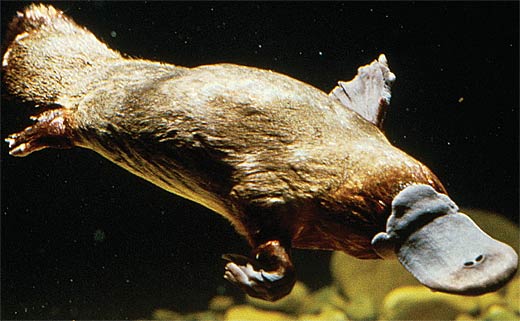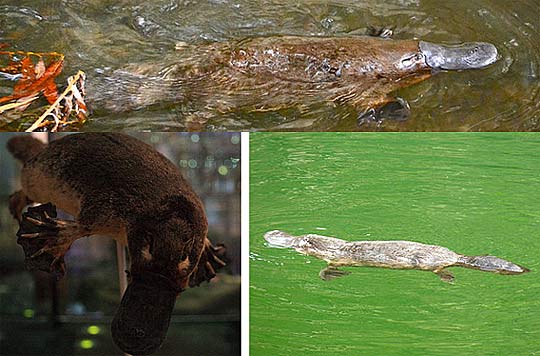Platypus – The Well-Equipped, Archaic Multi-medium Animal

What is it? a duck, beaver, otter or rodent? Does it live on land or water? It’s a platypus, its “semi-aquatic”, lays eggs and has venom heels. The platypus is the smallest of its group – the monotremes, being about 18-35 inches (46-89 cm) long without the tail. From Australian territories, it inhabits streams, rivers and lakes. It possesses a number of interesting physical characteristics.
The “duck bill” is not made of cartilage but of a leathery skin that is full of nerve endings and is therefore extremely sensitive. The bill also has electrosensors that detect weak electrical fields that are generated by prey. This helps hunting in murky waters where they may not be able to see, smell or hear. Cheek pouches store food for chewing and sorting. They are big eaters so they spend a lot of time hunting creepy crawlers like shrimp, crawfish, worms and larvae.

The feet are webbed with the webbing extending beyond the claws on the front feet. The webbed feet are efficient paddles for swimming through the water. When needed they can roll back the webbing for walking on land or digging burrows. The males have a horny spur on the hind legs that can secret poison. They may use the spur against attackers or against competing males in mating season.
The eyes and ear holes of the animal lie in folds that close when the animal is submerged, and the nostrils are located toward the end of the beak. The tail is used for storing fat, steering while swimming and for incubating eggs.
Dense, waterproof fur covers the entire body except the feet and bill. They can be colored dark brown to light brown and silver with a lighter or rusty brown underneath. The females often have more of a reddish tint.
